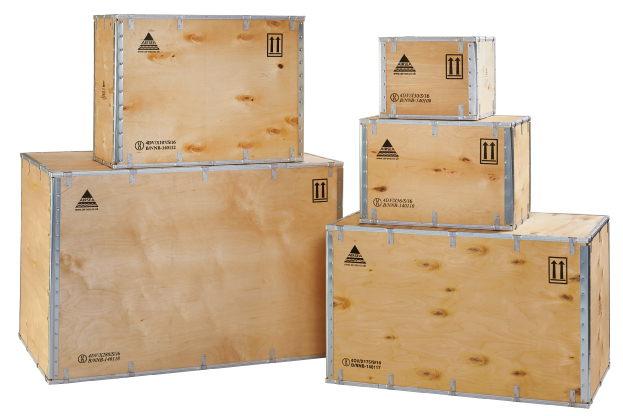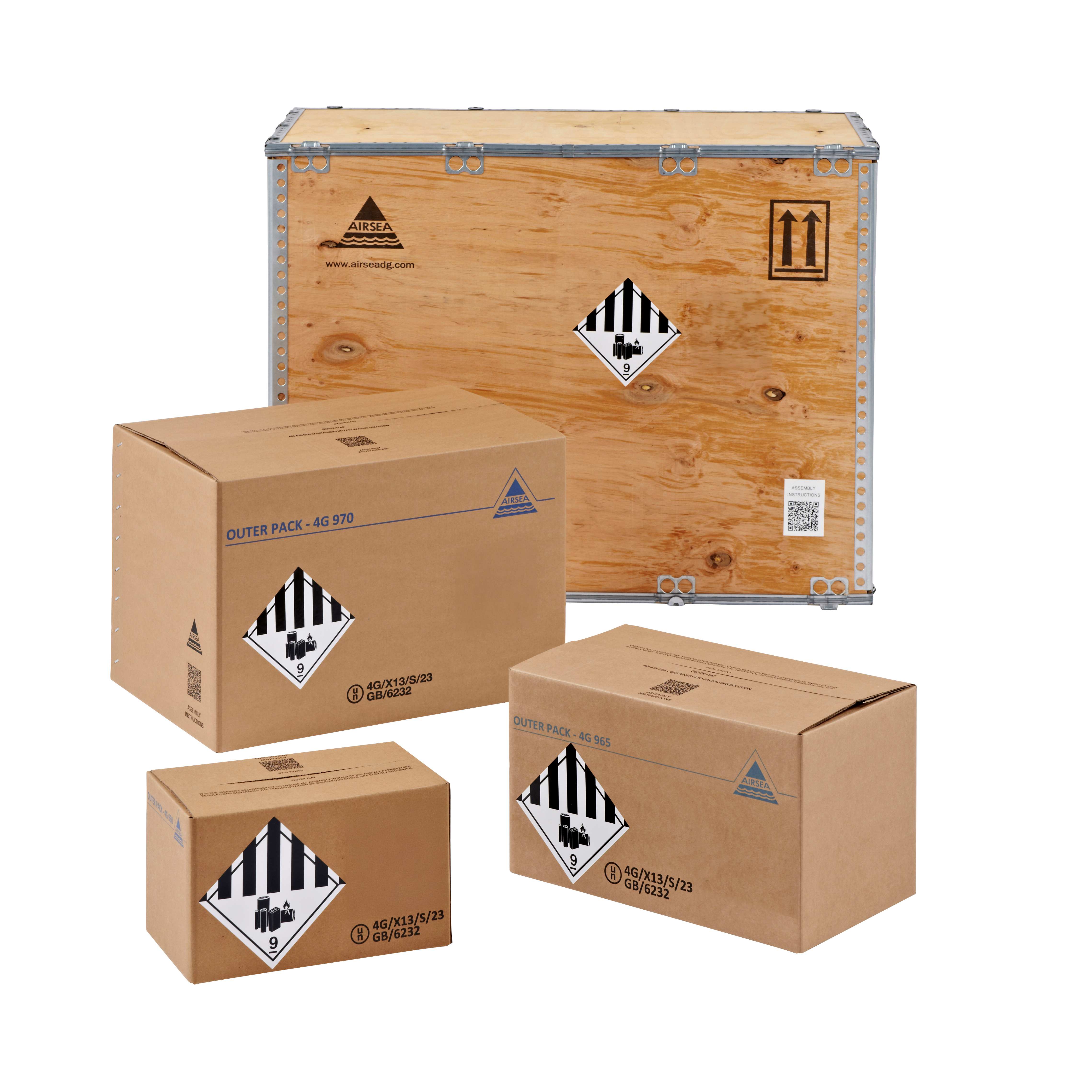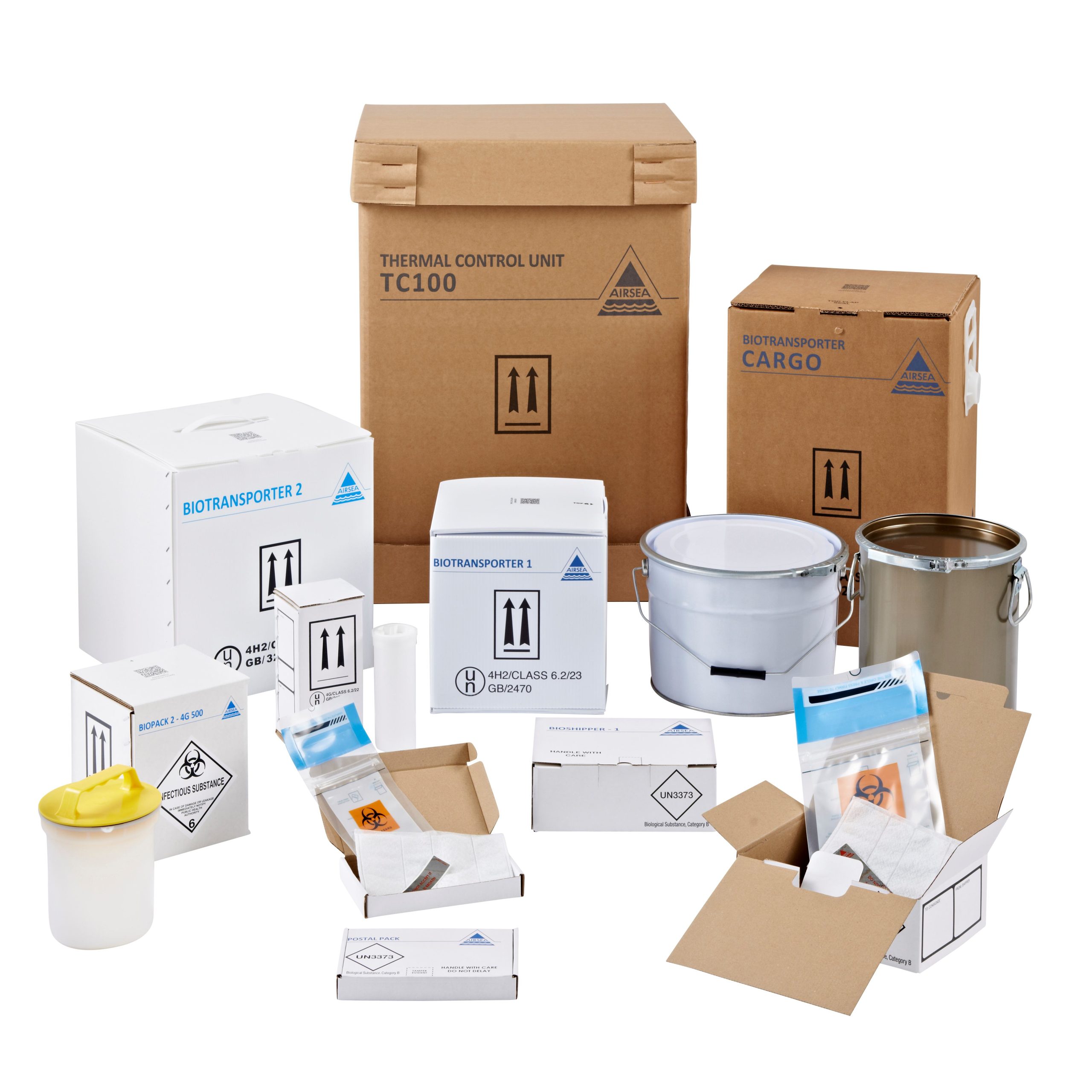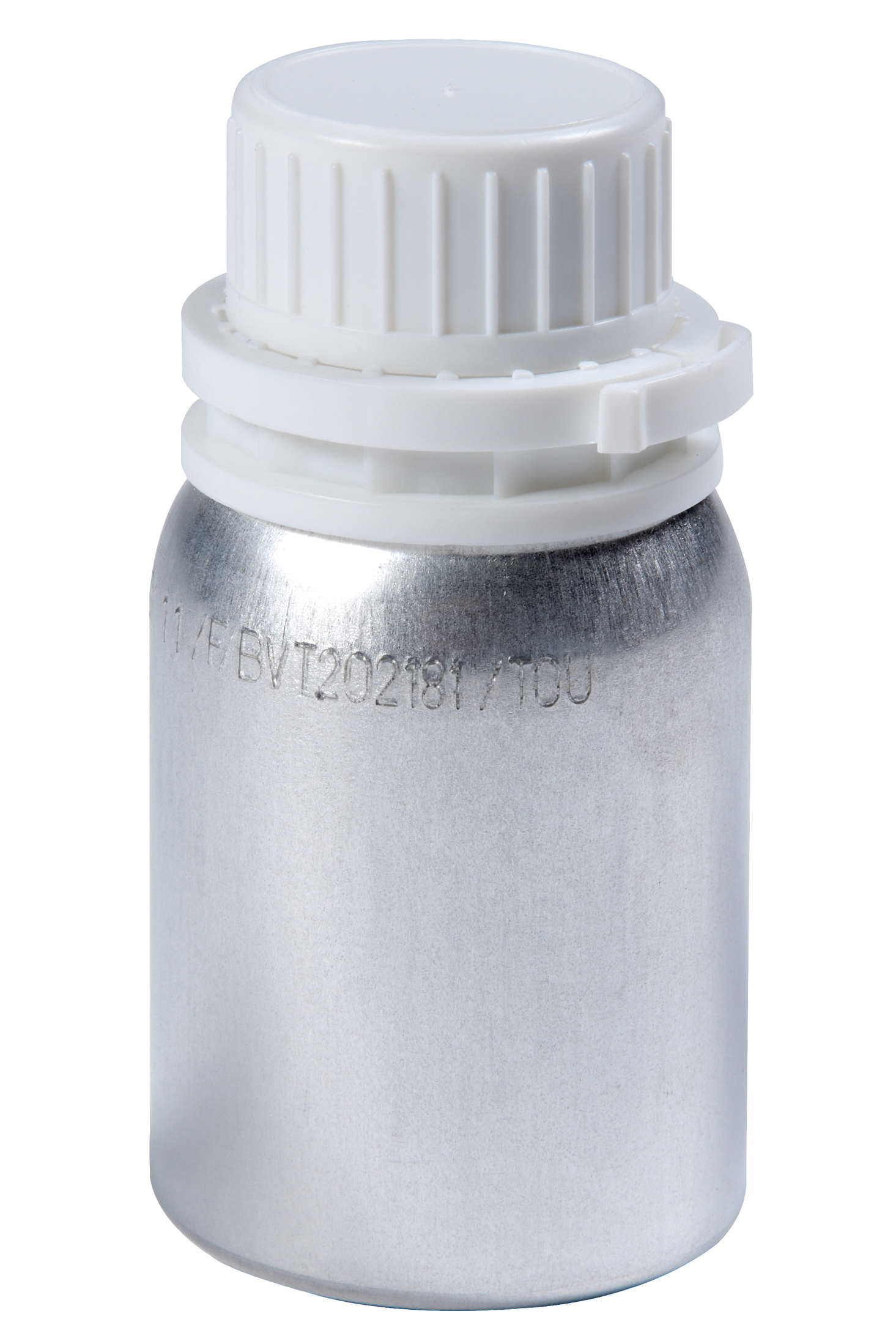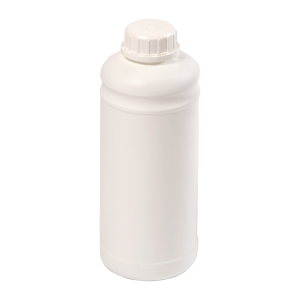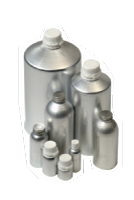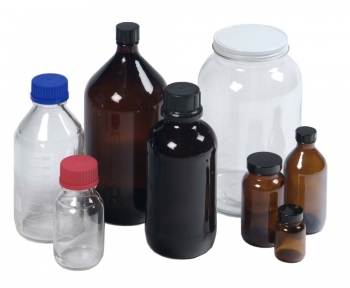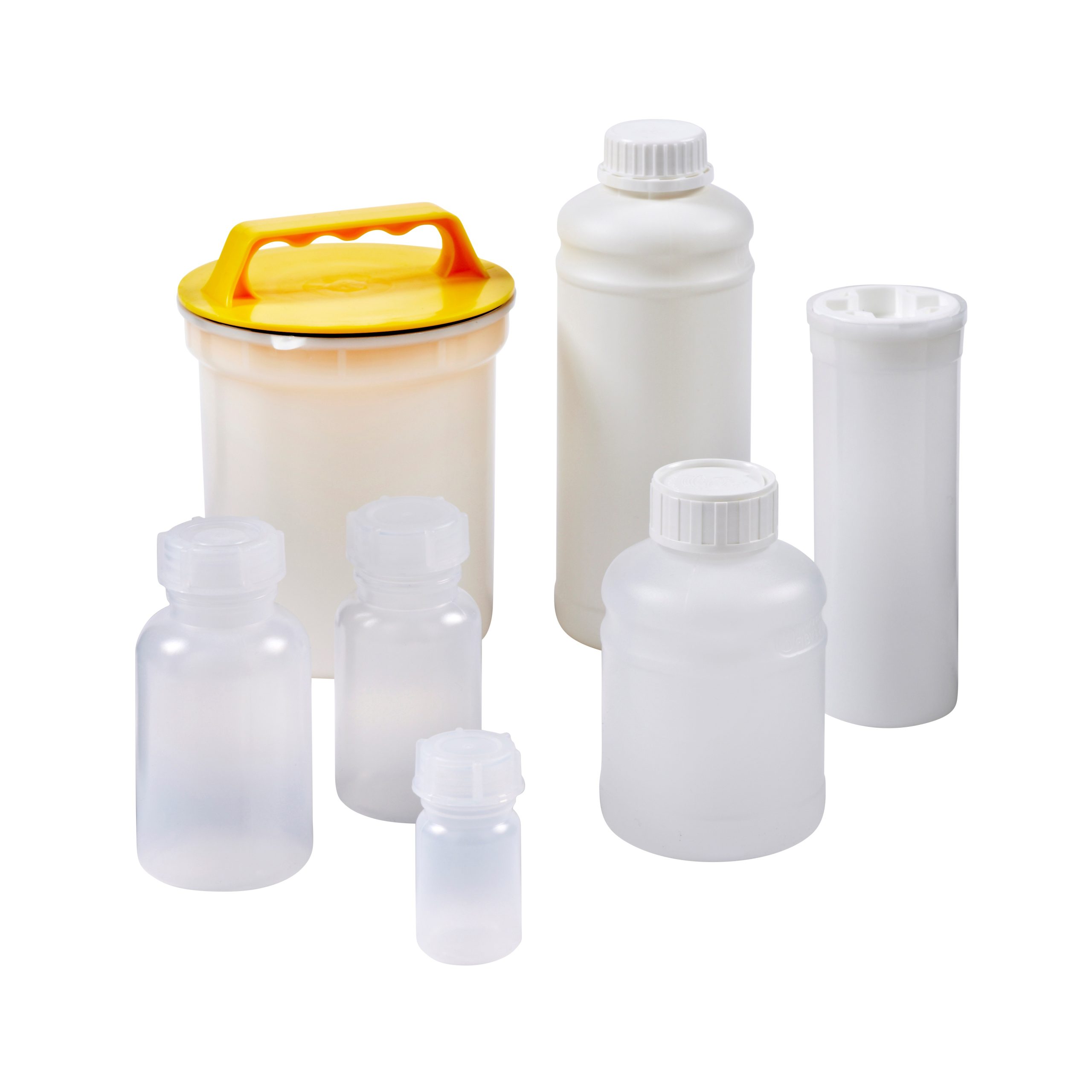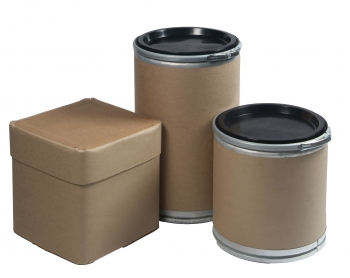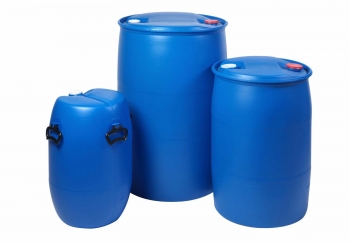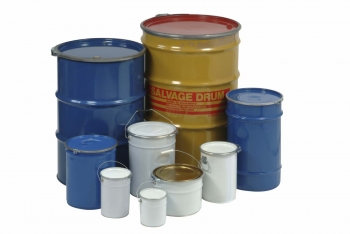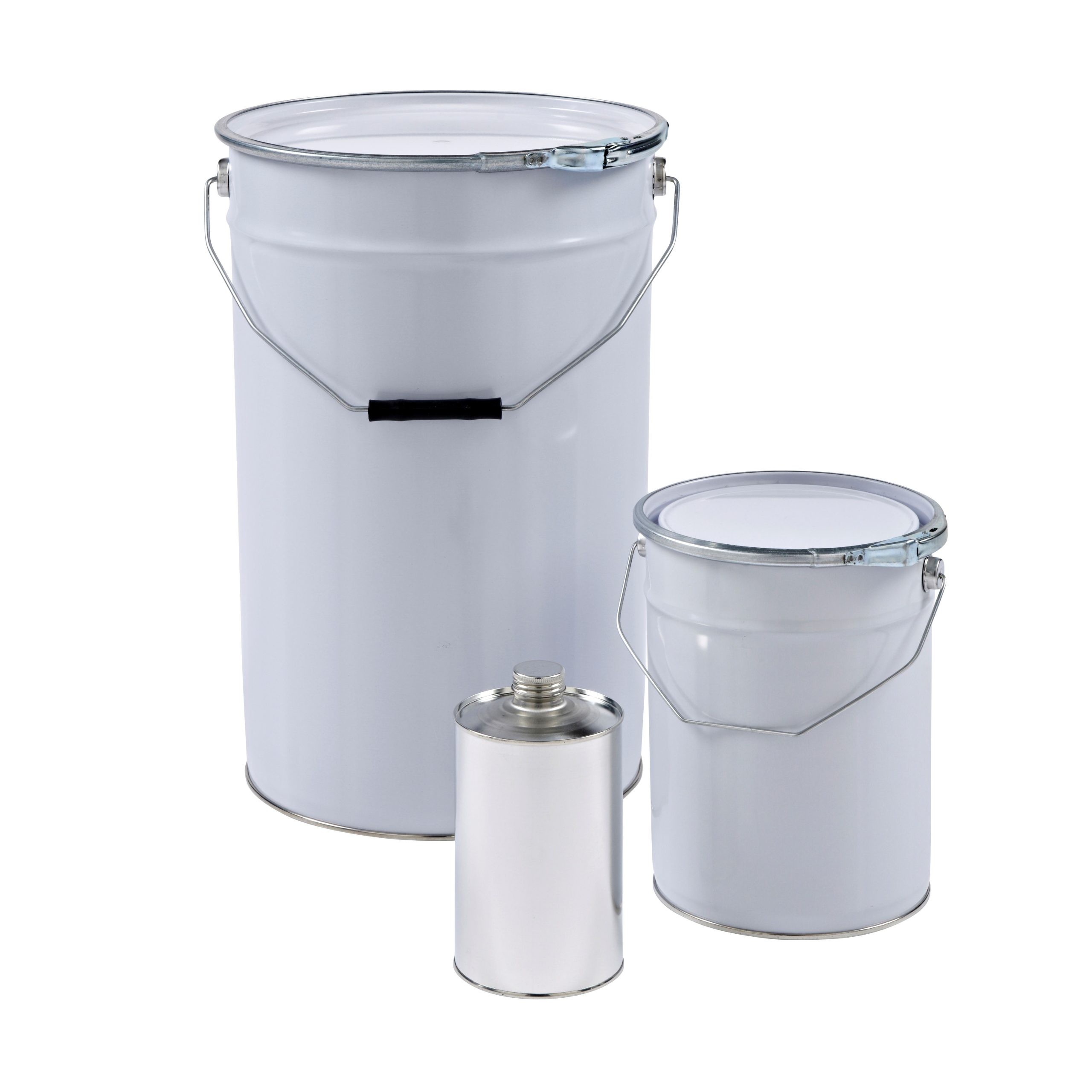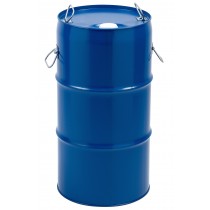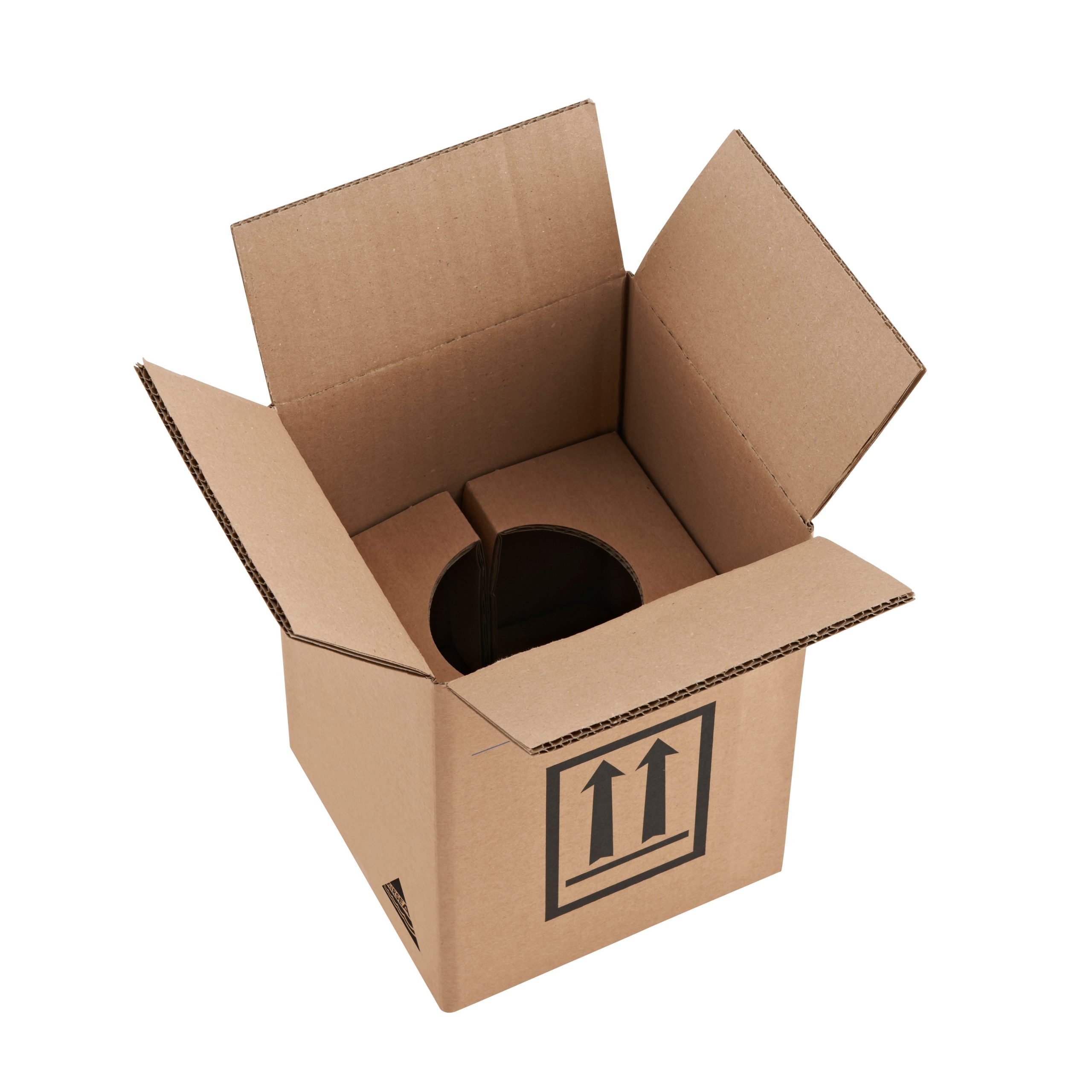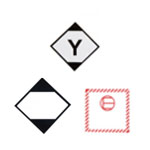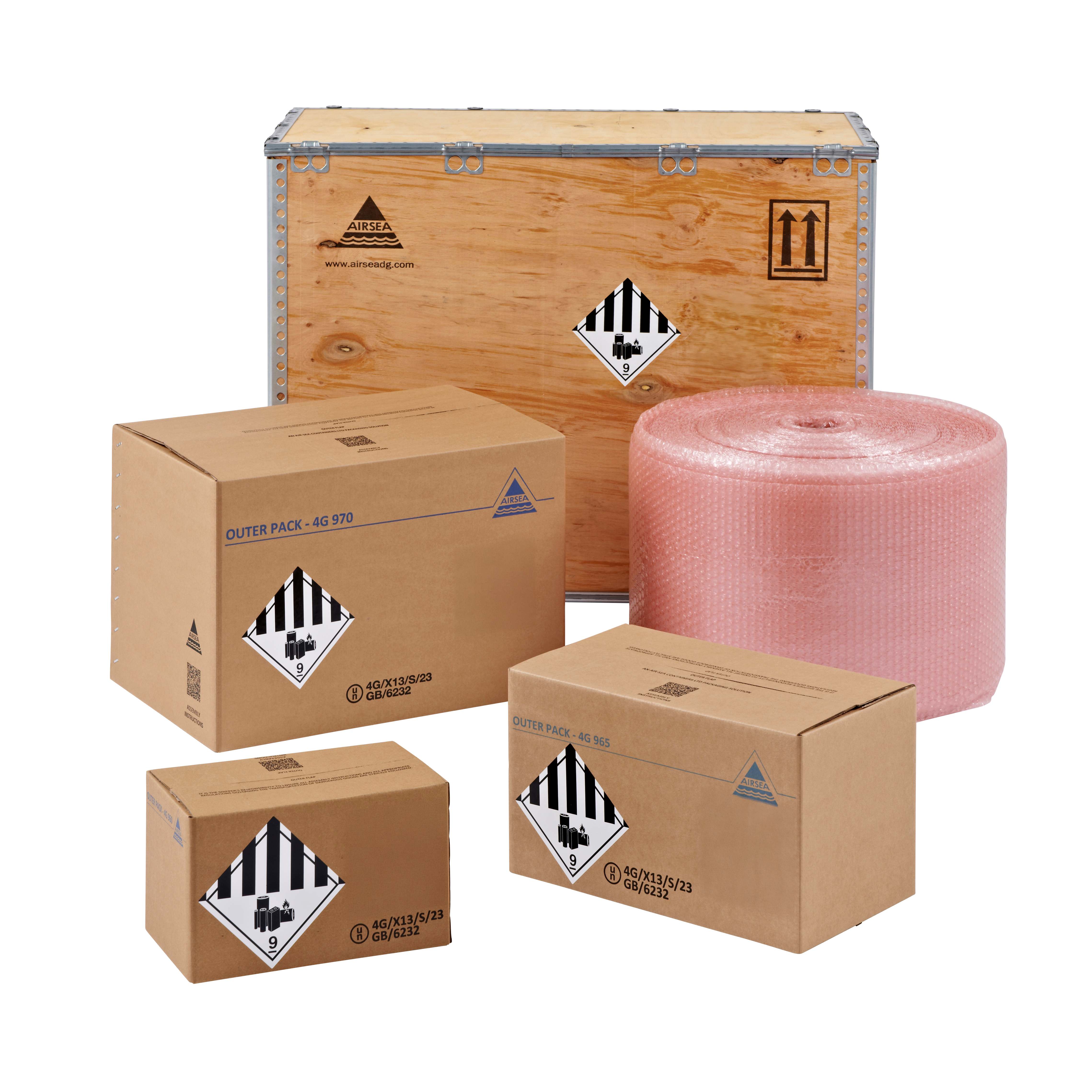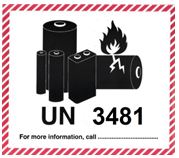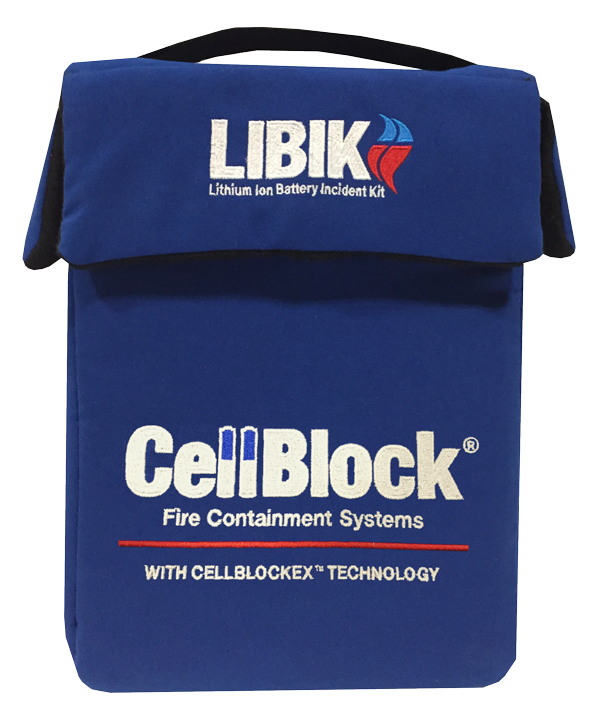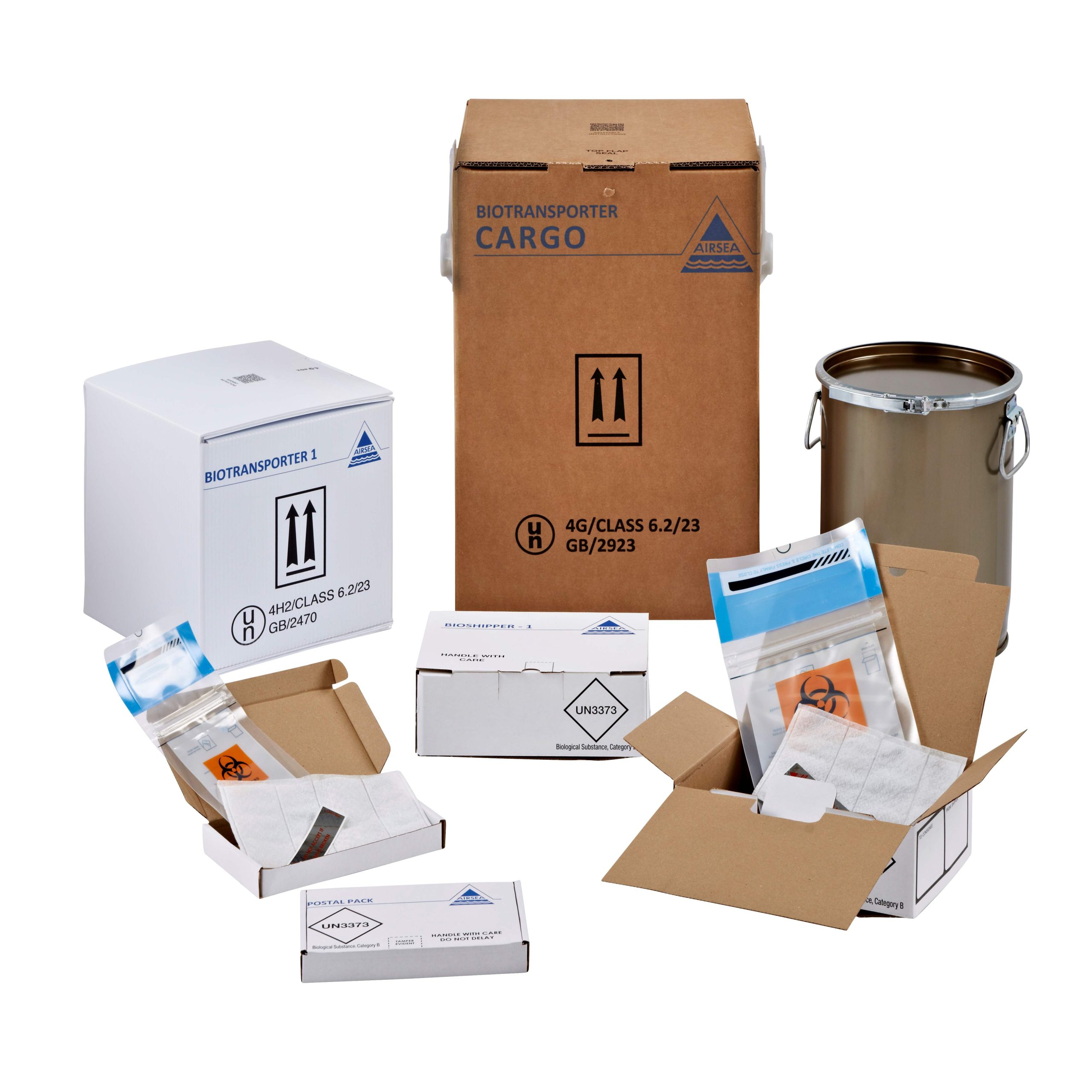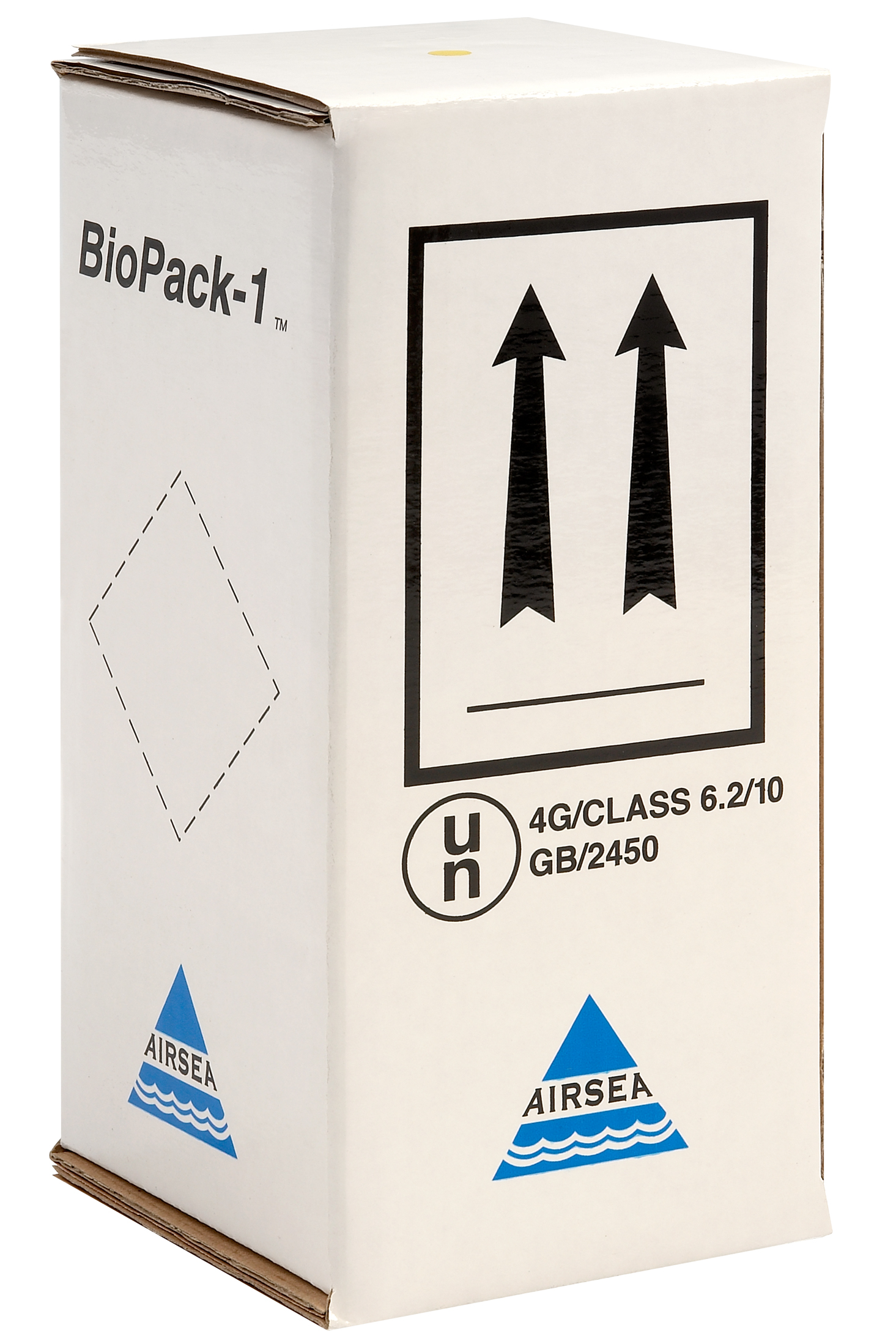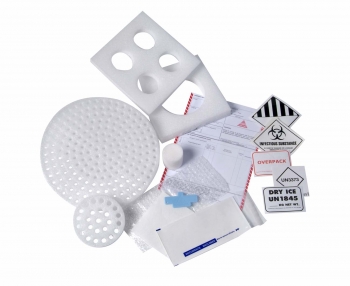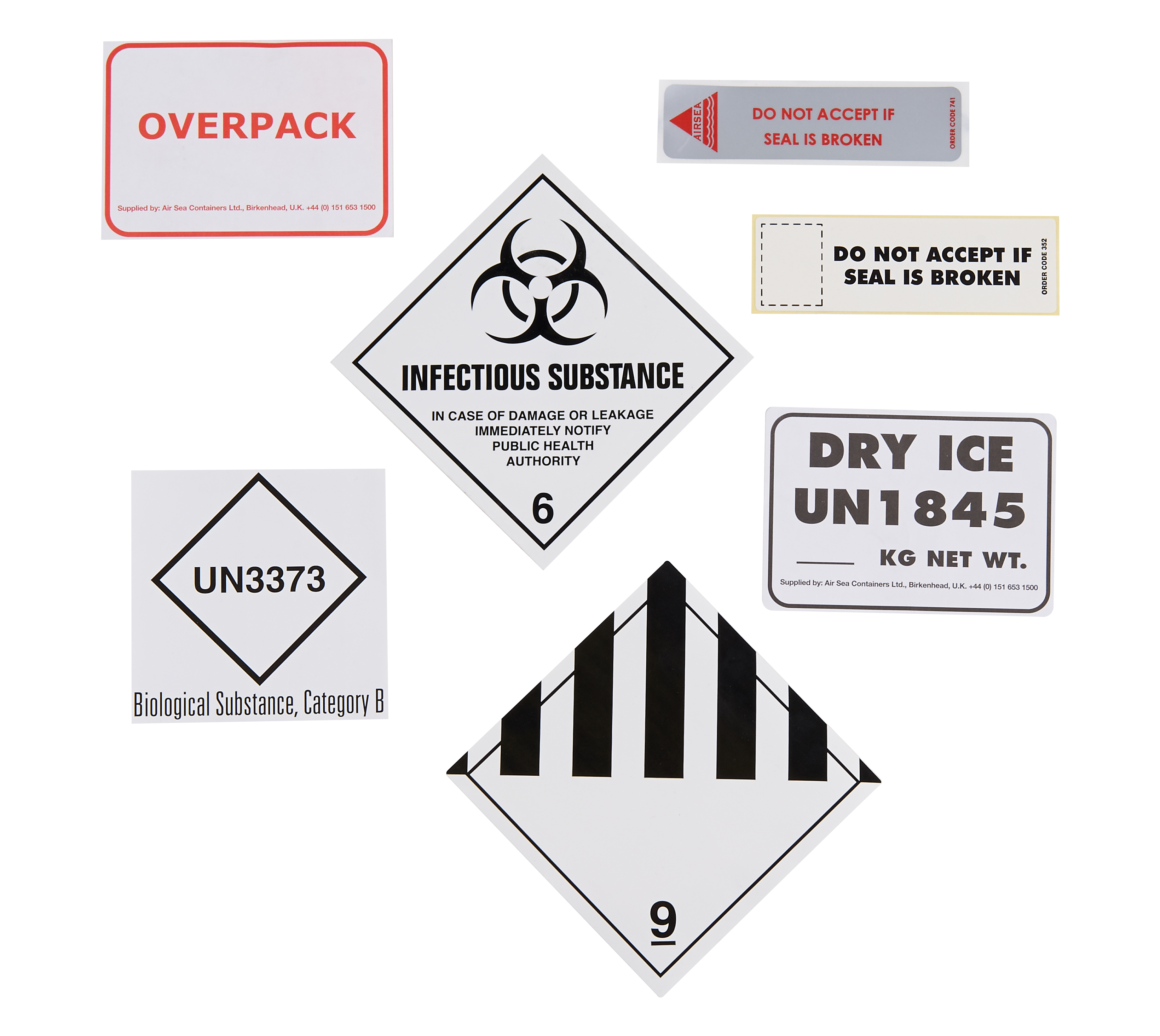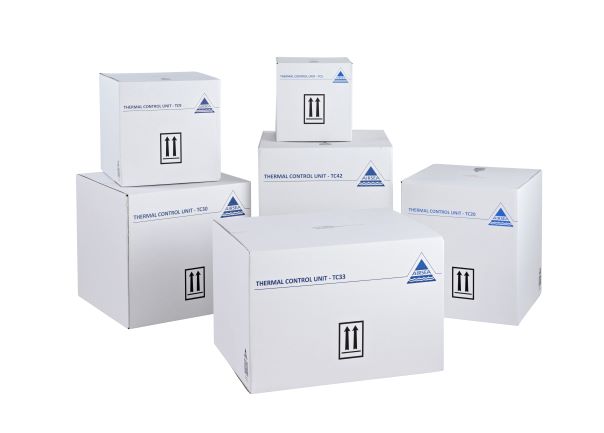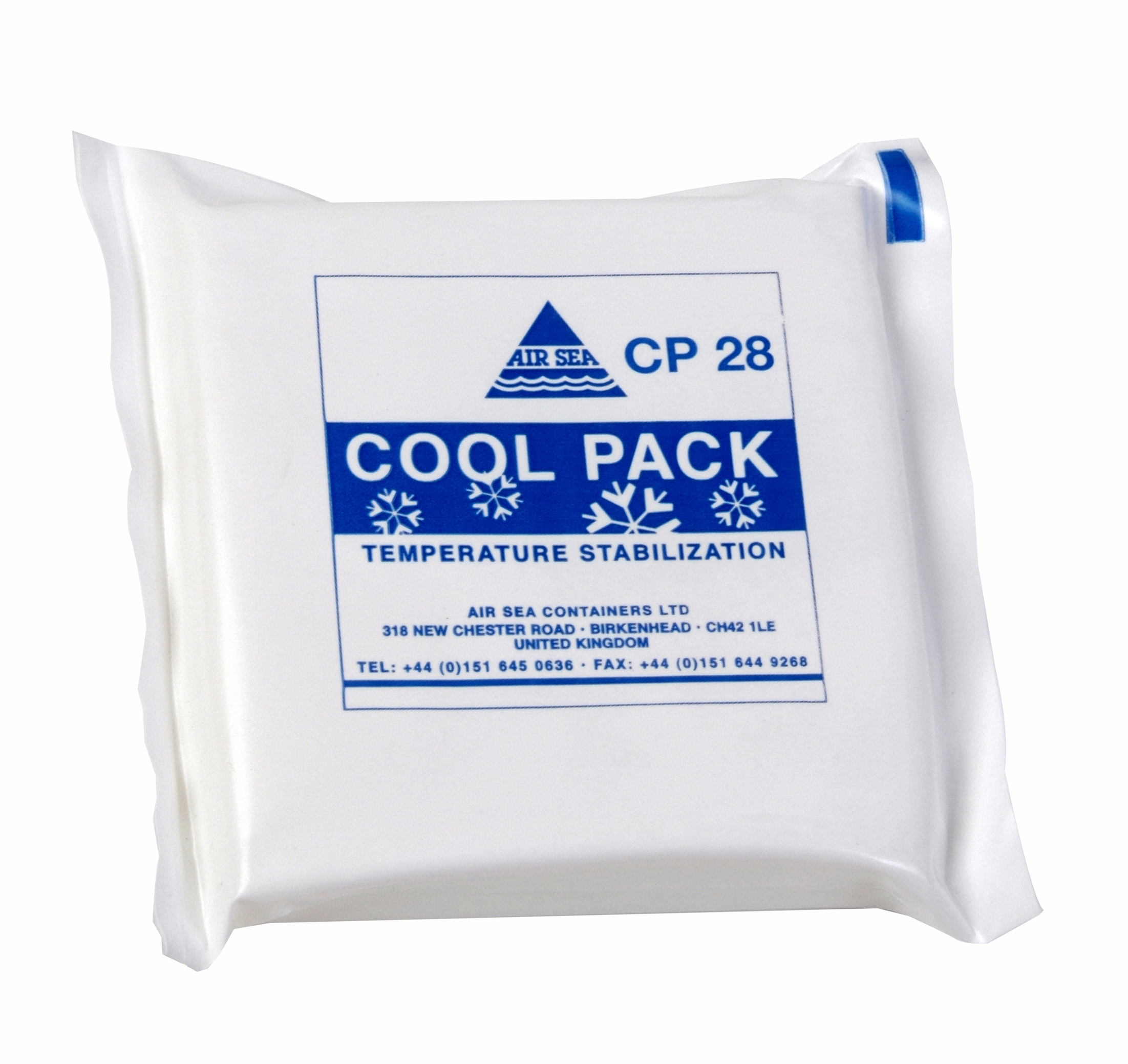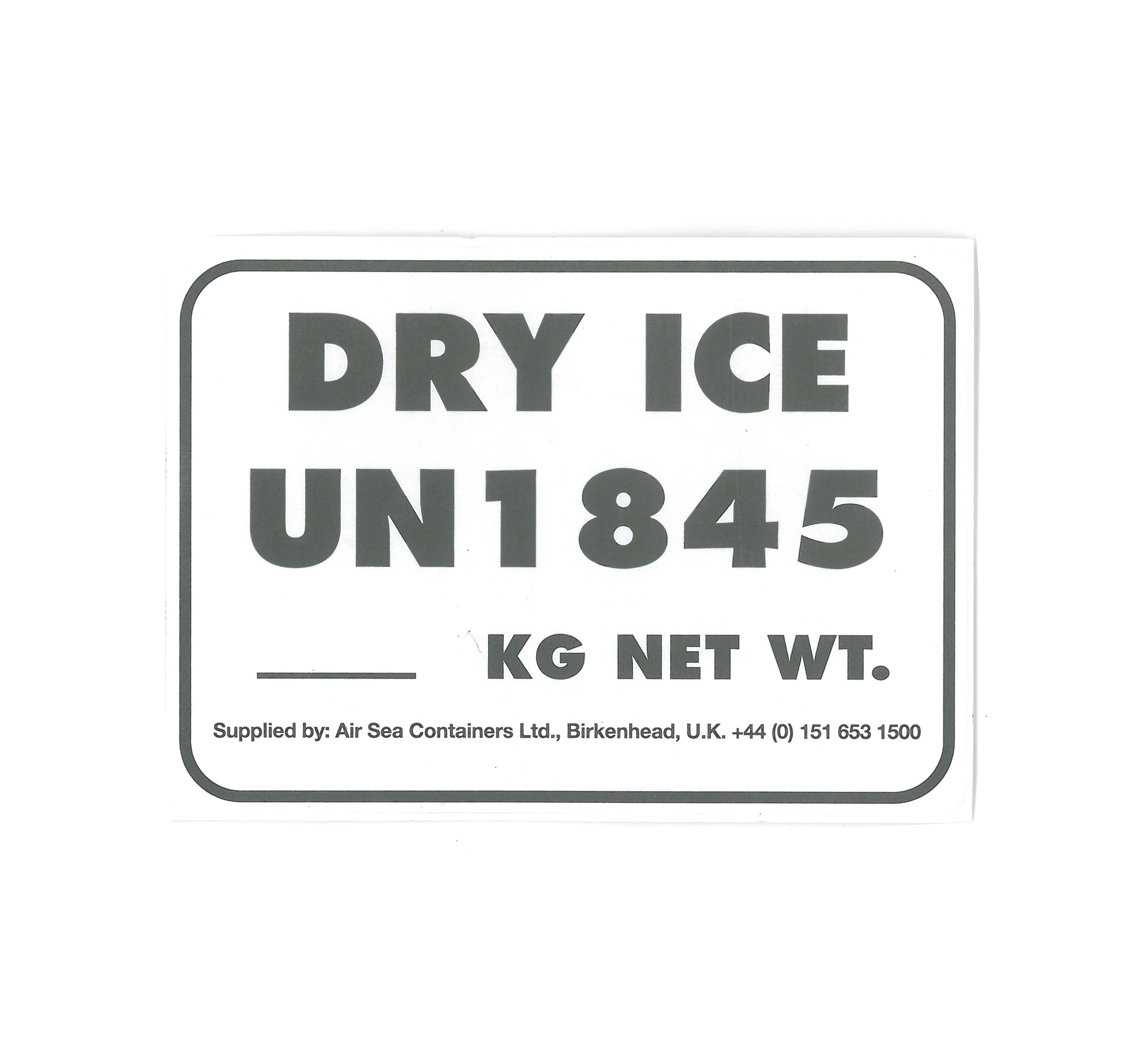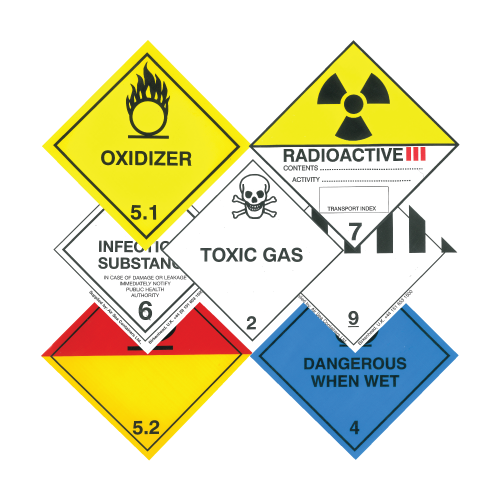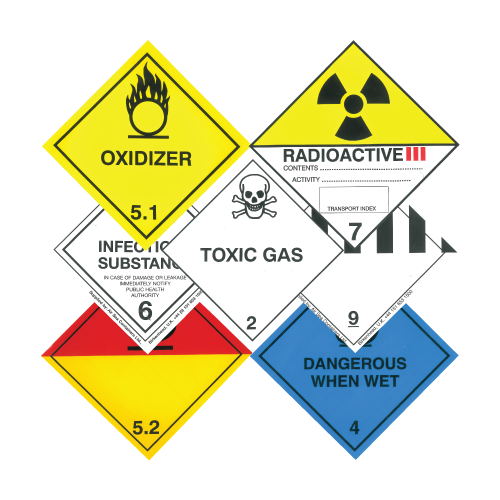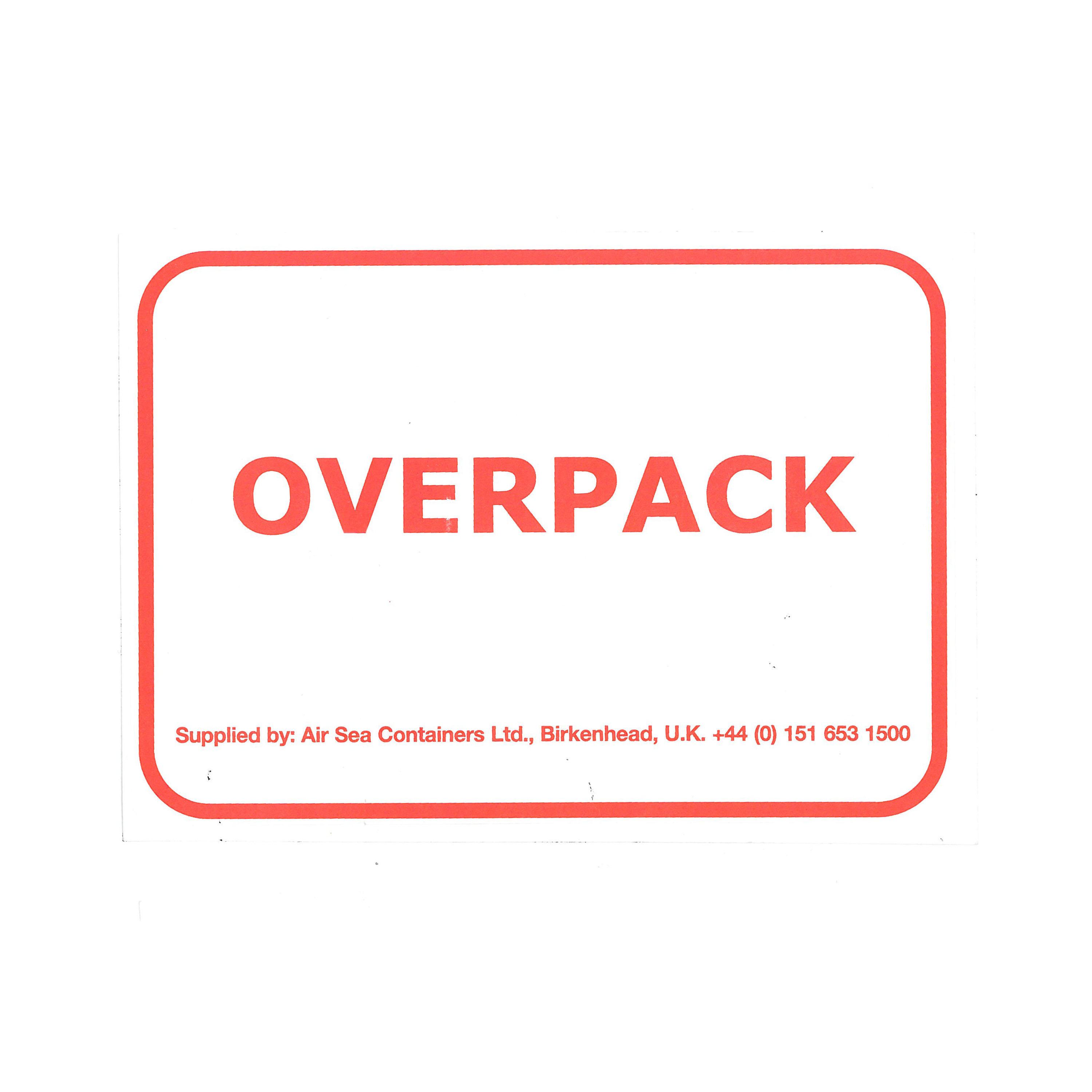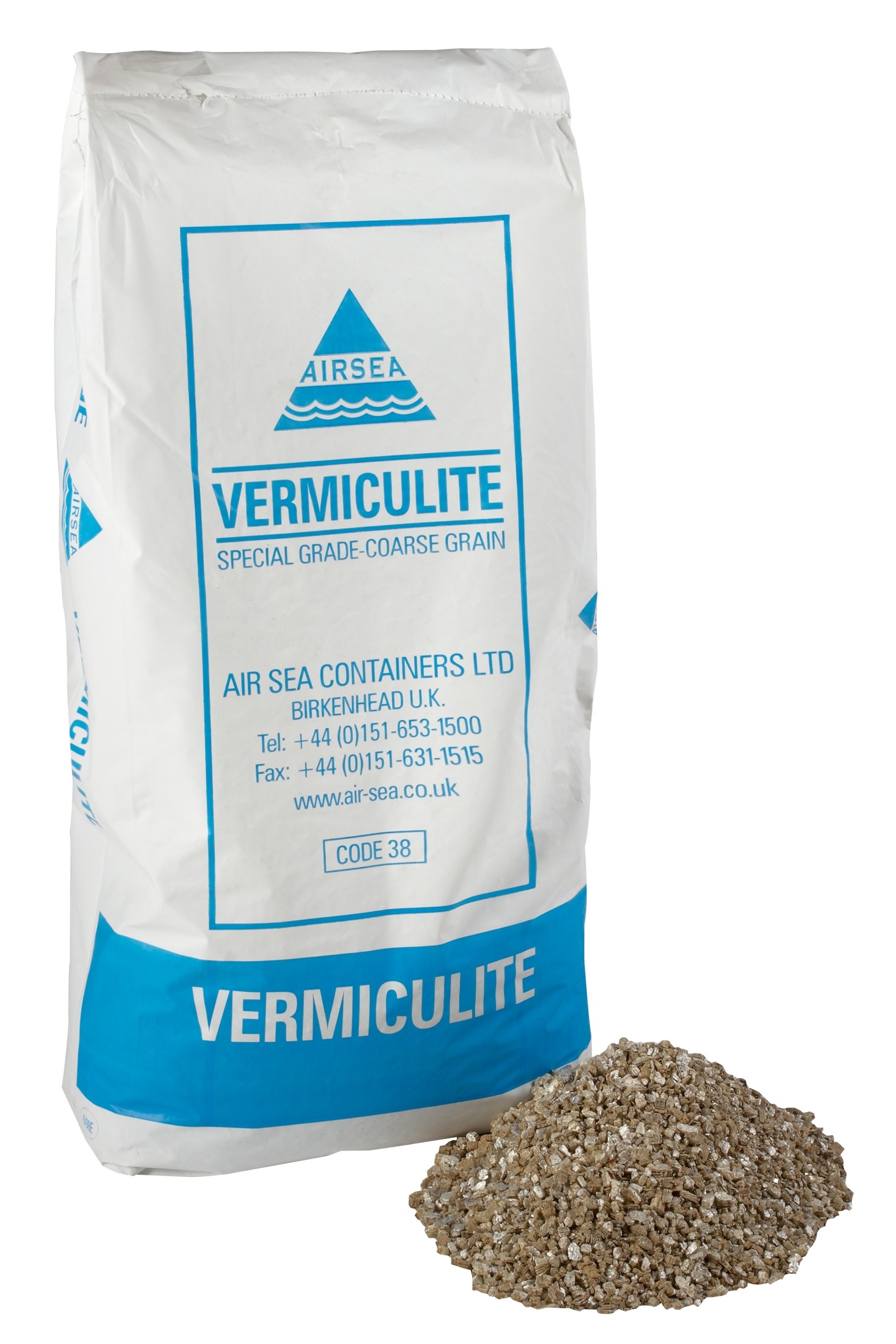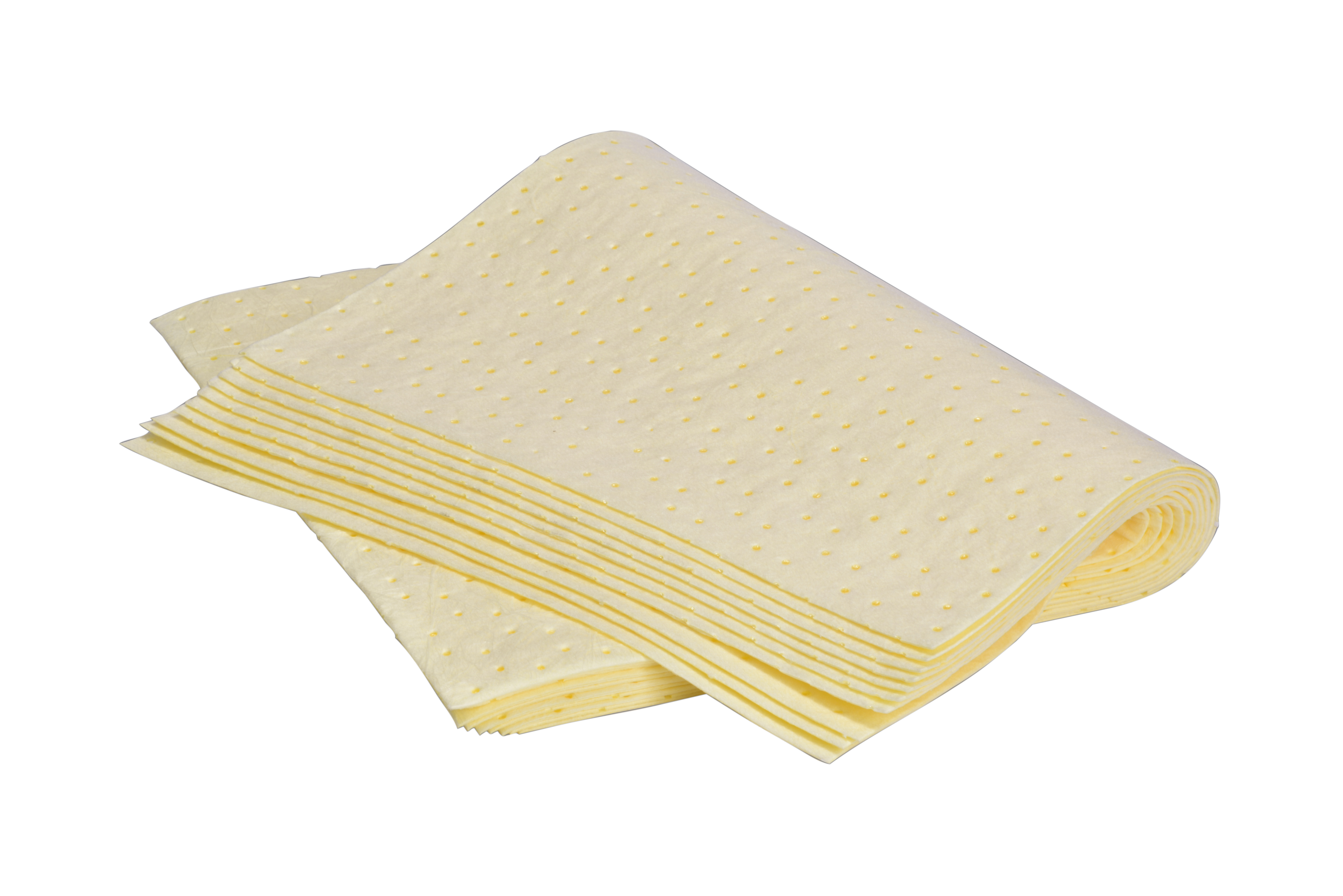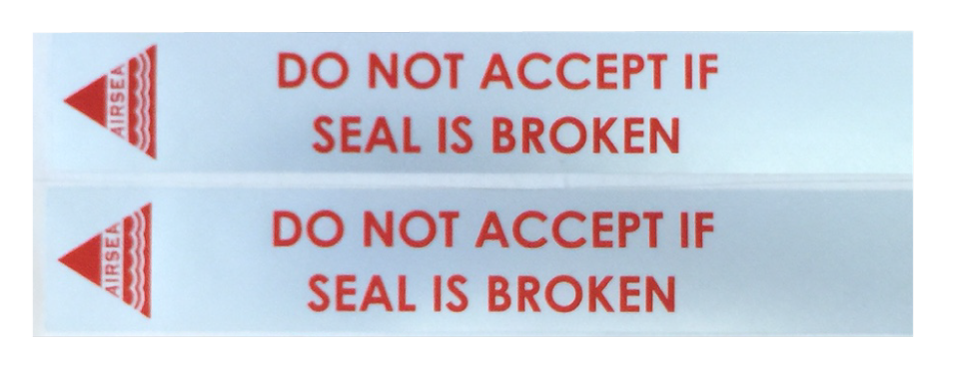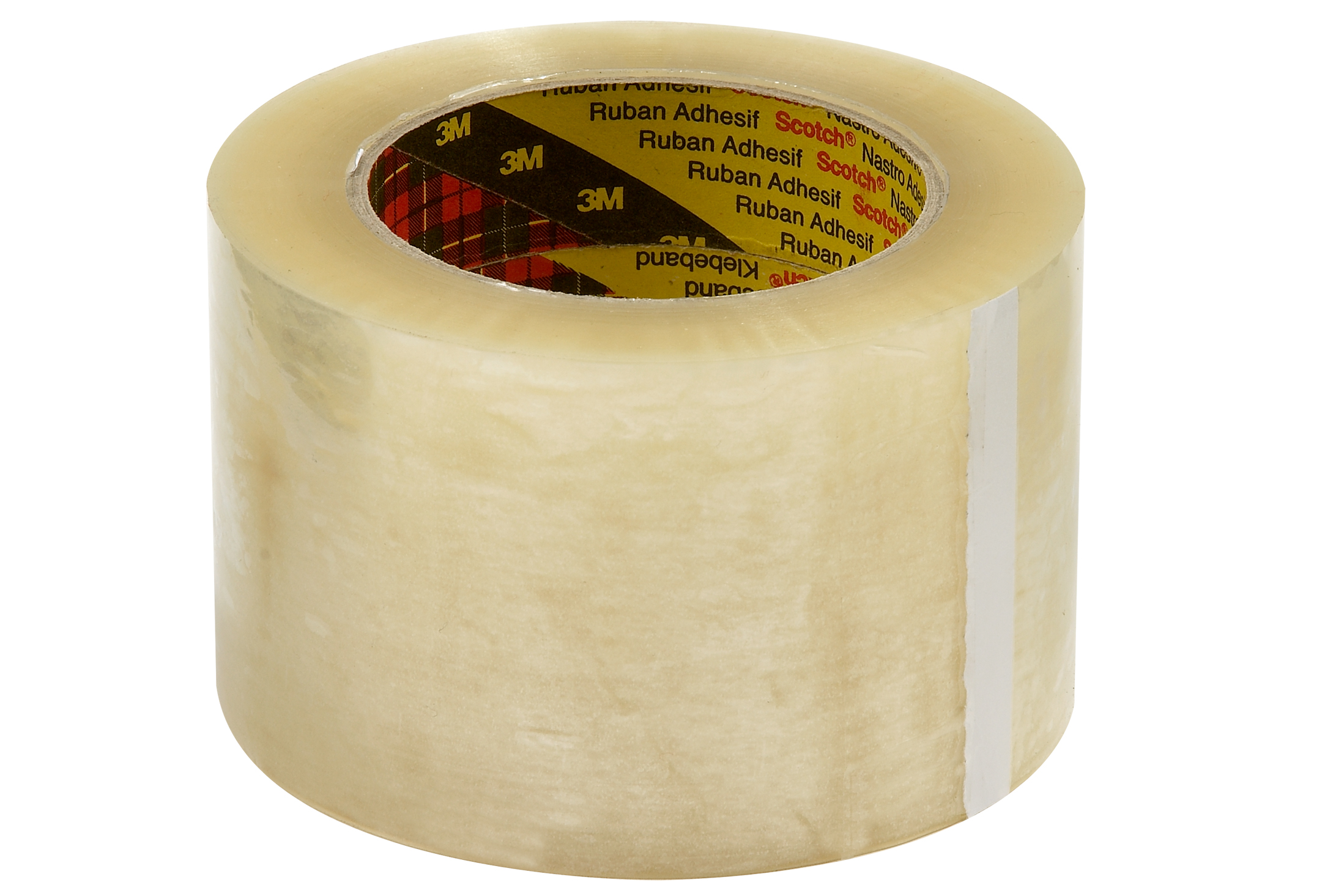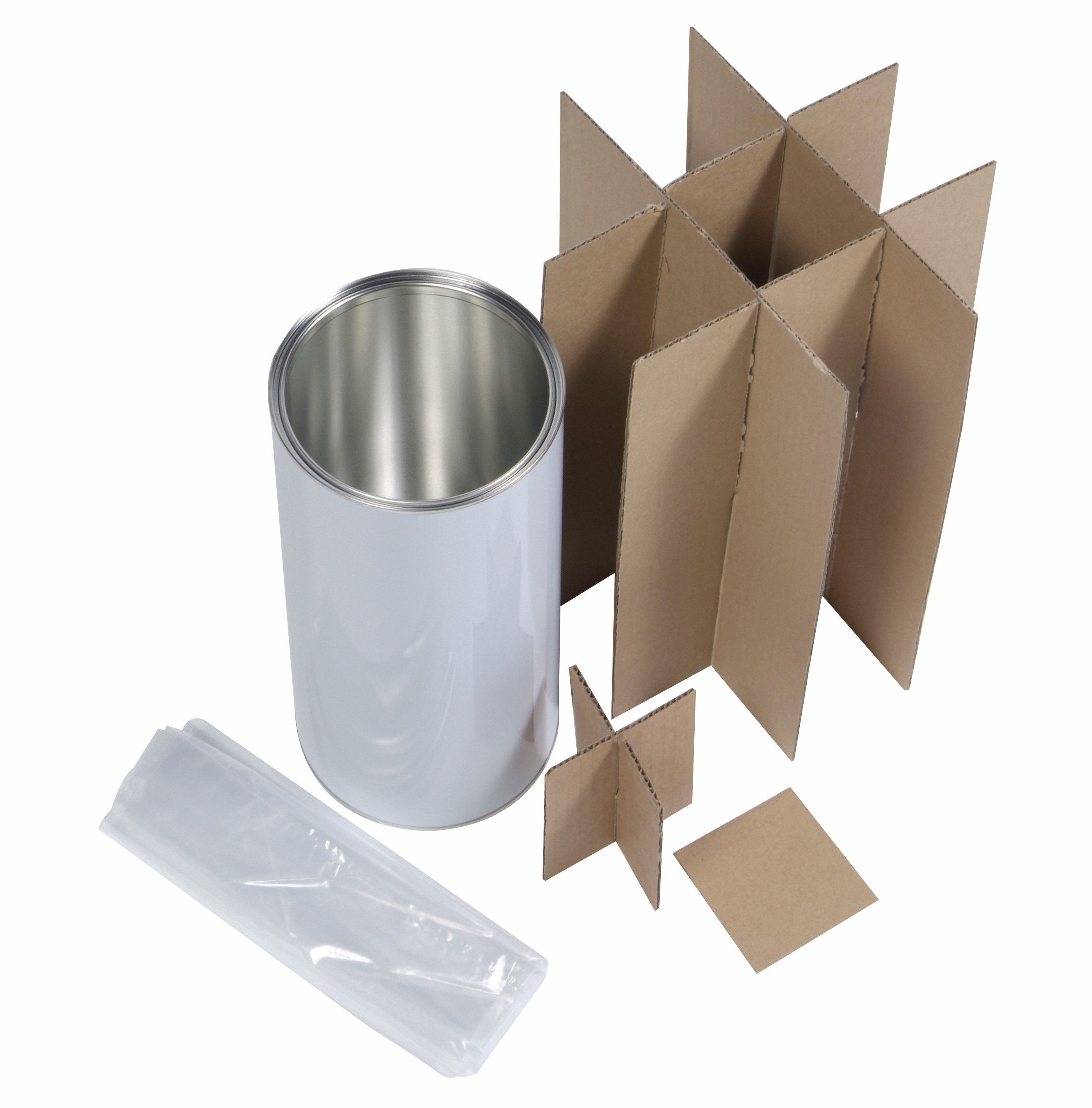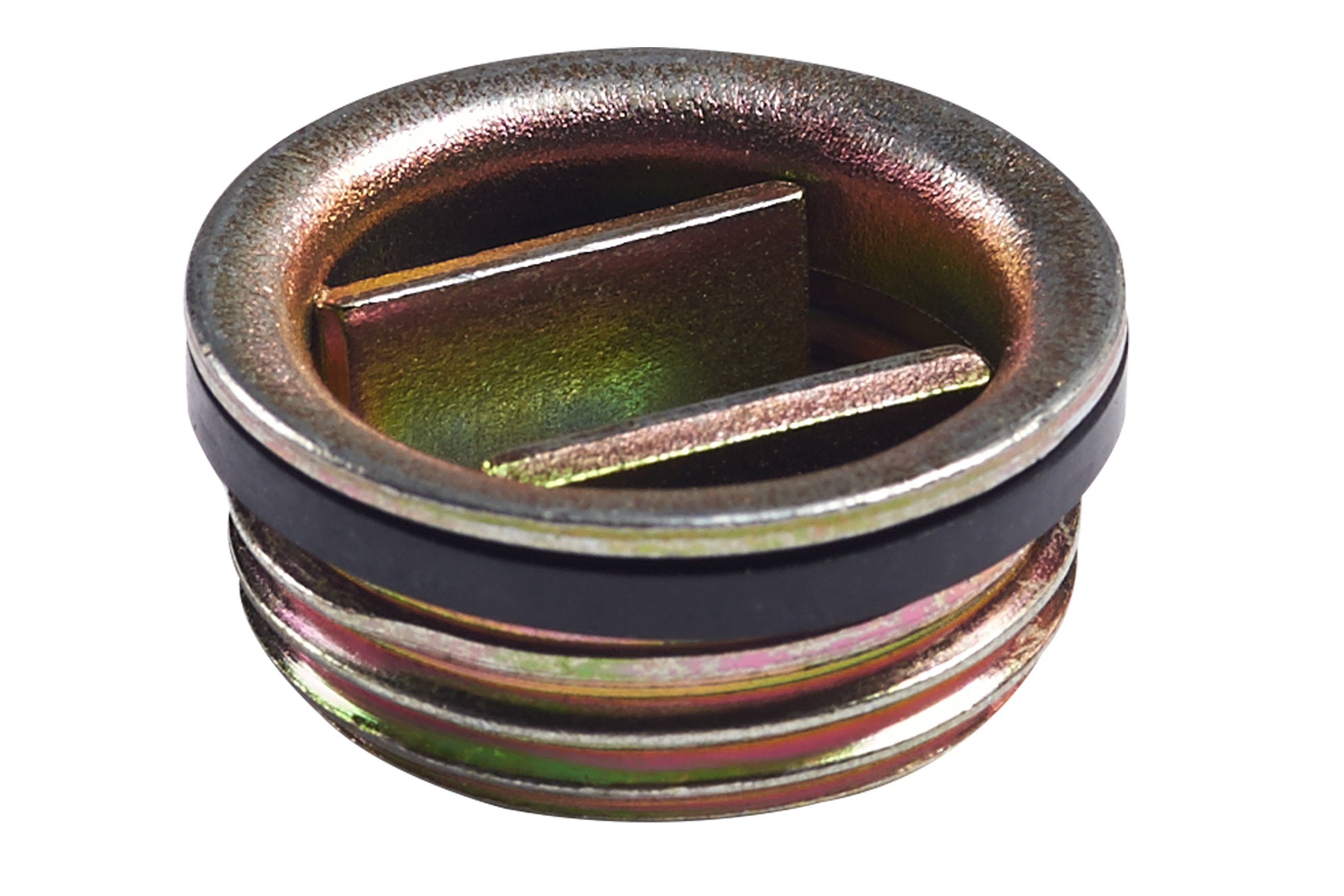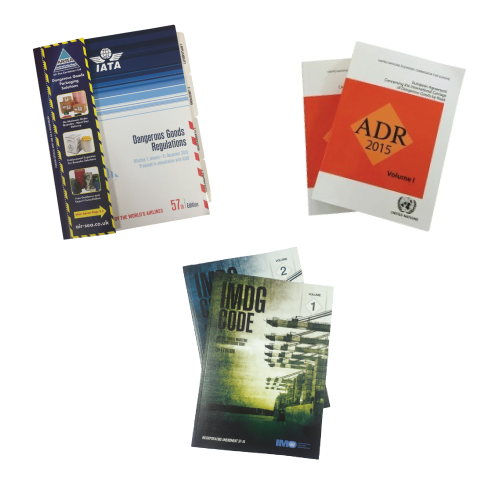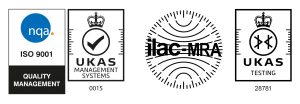There are lots of things to consider when packing your substances or articles in 4G or 4GV packaging. Regulations need to be followed but they can be complicated or sometimes simply not known. Laurence Richards, Air Sea Container’s Product Manager discusses the 5 common mistakes made by shippers when using 4G/4GV packaging.
Mistake 1: Using incorrect inners for the 4G or 4GV box
Each 4G packaging design has been tested and approved with the use of specific inner packaging. So, you cannot just choose any type of inners to go in your 4G box. You must use the same inner packaging as used in the testing process. The packaging manufacturer will advise what inners are approved for each 4G box and this should also be displayed on the assembly instructions.
For instance, if your chosen 4G box was tested and approved with 4 x 250ml plastic bottles, you cannot pack it with 2 x 500ml plastic bottles or 4 x 250ml glass bottles. The packaging was not designed to carry these types of inners and therefore has not been tested or approved for their use.
4GV on the other hand, is subject to slightly different testing criteria than 4G packaging, for example, 4GV boxes are always tested with glass inners. Once specific tests are passed, the 4GV packaging is then approved for use with non-specific inners, subject to weight limits defined by the test authority and set out on the UN approval certificate. Meaning with 4GV you can use different inner packaging than that which has been tested with the package.
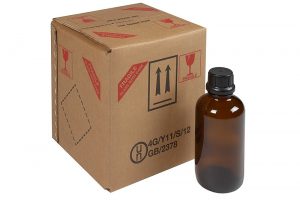
Mistake 2: Incorrect weight limits of inners
4G and 4GV packaging have different rules when it comes to weight allowance. In the case of 4G packaging, the UN Recommendations on the Transport of Dangerous Goods Model Regulations (UNRTDG) states, for packagings intended to contain solids or inner packagings the number (stated on the UN specifications mark) is the number corresponding to the maximum gross mass in kilograms, at which the design type has been tested. In this example the ‘16’ in the UN Mark 4G/X16/S/20/GB/5001 refers to the maximum gross mass in kilograms of the entire package (inners, substances and other accessories like cushioning materials).
However, when you add the letter “V” to the packaging code (4GV) this signifies a “Special Packaging”, UNRTDG regulations states one of the special packaging requirements relating to weight for “V” variants is, ‘the total combined gross mass of inner packagings shall not exceed one-half the gross mass of inner packaging used for the drop test’. Meaning that only half the weight of the tested inners are allowed for said 4GV packaging design.
Shippers can refer to the assembly sheet that accompanies the packaging for inner packaging weight allowances or contact the packaging manufacturer/supplier.
If shippers are unaware of this rule and inadvertently break this by filling the inners to more than half the tested weight, they would be in breach of the UN approval.
Mistake 3: Any cushioning will do
Vermiculite, polystyrene, newspaper, biodegradable chips, bubble wrap? Would you consider using these as cushioning materials in your chosen UN Approved Packaging?
Actually, it isn’t simply a case of choosing your preferred cushioning type to use in the UN approved packaging. As each UN approved packaging design has undergone rigorous test in order for it to prove its capabilities and to gain UN certification, the cushioning used in the tests needs to be the same cushioning type when assembling the UN packaging. For example, If it’s been tested with vermiculite, then you must use vermiculite. Cushioning is used as a protective layer and in some cases as an absorbent, so if alternative cushioning is used, not only will it invalidate the UN certification but you also risk the inners and substances being compromised during transit. Again, the approved cushioning type can be found on the manufacturer’s assembly instructions.
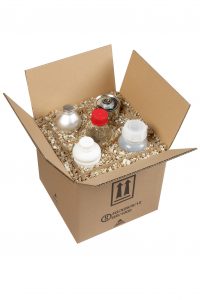
Mistake 4: Removing buffers or partitioning
It has been known for shippers to remove buffers and partitions to accommodate customer’s own inners. These are designed to support the structure of the box, protect the inners from moving around and becoming damaged. Again, tests are undertaken to ensure the packaging design can withstand various factors that may be experienced during transport. If you remove or change any part of the packaging for 4G and 4GV packaging, you will compromise the integrity of your package and its capability to protect the inners and substance. If this happens, the UN packaging is therefore not being used as per its design approval, so the UN approval certification will no longer be valid.
Mistake 5: Using any tape and any taping method
Tapes come in various sizes and types, from heavy duty brown tape to reinforced nylon. They are designed to seal 4G or 4GV boxes to avoid them opening or the inner packaging escaping during transport. The tape type and taping method play a fundamental role in the testing process, for successful tests that then go on to approval of a package design, the tape and method applied has been proven to be capable of keeping the package in its entirety when in transport.
Shippers have been known at times to use whatever tape they have to hand and will often use their preferred taping method. Doing this could compromise the sealant strength and structural support of the packaging. Less robust tape could result in the tape adhesive not being strong enough to adhere to the packaging, whilst using a different taping method could result in the packaging top flaps or bottom flaps opening during transport.
If the tape or taping method wasn’t the one used in the testing process, the shipper should not be using it on their UN Approved 4G or 4GV fibreboard box. You can find the required tape and method on the packaging assembly sheet.
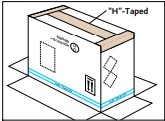
It is fundamental to refer to relevant transport regulation to ascertain the correct packaging requirements for your dangerous goods, however the next stage, the packing process is also important and one often overlooked. Ensuring the packing process is done compliantly and the substance is packed correctly as per the assembly instructions, is fundamental in ensuring that the box can fulfil its capabilities. If this step is overlooked, the shipper could inadvertently pack the dangerous goods incorrectly which could end up invalidating the UN certification and therefore it would not be packed compliantly nor safely.
Information correct at time of publishing, 21st July 2021
 UK
UK



